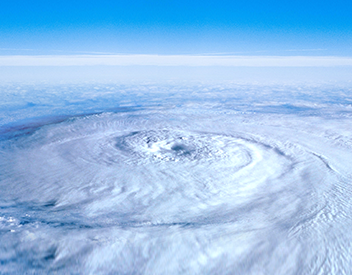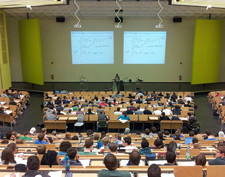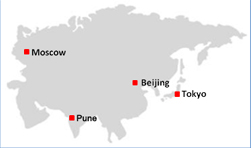Summer Climate Outlook for Asia in 2025
Summer Climate Outlook for Asia in 2025
1. Monitoring and Outlook of ENSO
According to the World Meteorological Organization (WMO)'s report issued on March 2025, the weak La Niña event that emerged in December 2024 is likely to be short-lived. Forecasts from the WMO Global Producing Centres for Seasonal Prediction indicate that the current cooler-than-average sea surface temperatures in the equatorial Pacific are expected to return to normal. Most ENSO (El Niño-Southern Oscillation) models predicted an ENSO-neutral condition. All the forecasts in this session of the Forum on Regional Climate Monitoring, Assessment and Prediction for Asia (FOCRAII) has also indicated a neutral phase.
2. Consensus prediction of precipitation and temperature for JJA 2025 in Asia
a) Summer monsoon
Based on the scientific understanding of the mechanism of the Asian summer monsoon and interpretation of climate model products, the East Asian summer monsoon is predicted to be stronger during the coming summer. Meanwhile, the South Asia summer monsoon will be above normal. In JJA (June-July-August) 2025, the western Pacific subtropical high is expected to be stronger than normal with its position shifted northward and westward.
b) Precipitation
The predictions of precipitation are based on the possible influence of external forcing factors and summer monsoon circulations. The deterministic consensus prediction is illustrated in Fig. 1A. The prediction results in this figure are obtained from the feedback of the survey of FOCRAII. The results of probabilistic precipitation prediction from 7 dynamical models and the multi-model ensembles including European Centre for Medium-Range Weather Forecasts (ECMWF), the Climate Forecast System version 2 (CFSv2) of National Centers for Environmental Prediction (NCEP), Japan Meteorological Agency (JMA), the Asia-Pacific Economic Cooperation Climate Center (APCC), Beijing Climate Centre (BCC), Copernicus Climate Change Service (C3S), and China Multi-Model Ensemble (CMME) are shown in Fig. 1B.
c) Temperature
The deterministic temperature prediction indicates that the temperature will be above or near normal across most regions of Asia during the coming summer (Fig. 2A). The probabilistic predictions from dynamical models show similar results (Fig. 2B). Therefore, heatwaves should be paid much more attention to in Asia.
d) Tropical cyclone activity
BCC predicts that the total number of tropical cyclone (TC) frequency over the northwestern Pacific and South China Sea will be near normal in 2025, with a range of 27-29 (the 1991-2020 climate mean number is 25), and 7-9 TCs will land in China (the climate mean number is 7). The overall intensity of TCs will be near or slightly stronger than normal, and the prevailing TC tracks will be mainly westward and northwestward. It should be noted that the frequency of TCs affecting different countries or regions varies significantly. Here is the prediction only provided from BCC.
3. Methods used in the predictions
The prediction methods used by all participants were surveyed. The results showed that most predictions were made using both dynamical and statistical methods.
Based on these surveys, the details of precipitation and temperature prediction for JJA 2025 by different participants are also synthesized and shown in Fig. 1A and Fig. 2A respectively. It should be kept in mind that the predictions in Fig 1 and 2 contain uncertainty in some particular areas. Therefore, caution should be taken in using the information. It remains a future challenge to seek methodologies for appropriate representing uncertainty of prediction. In addition, it is emphasized that these predictions are relevant only to seasonal time scales and relatively large areas.

Figure 1A Deterministic precipitation prediction for summer 2025 from feedback (A: above normal; N: near normal; B: below normal)

Figure 1B Precipitation prediction from dynamical models for summer 2025

Figure 2A: The same as Figure 1A, but for temperature.

Figure 2B: The same as Figure 1B, but for temperature.
Source: FOCRAII
Editor: LIU Shuqiao











